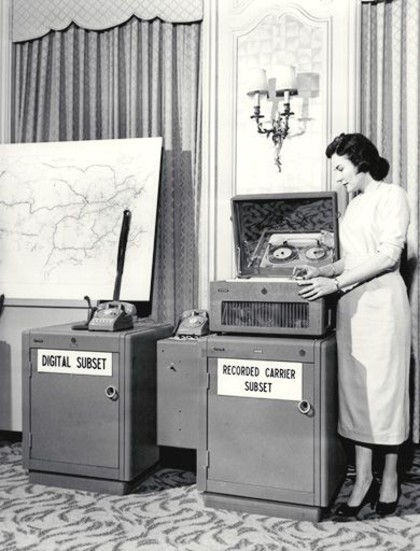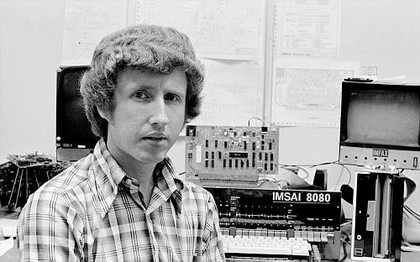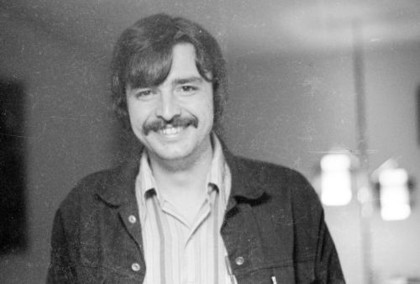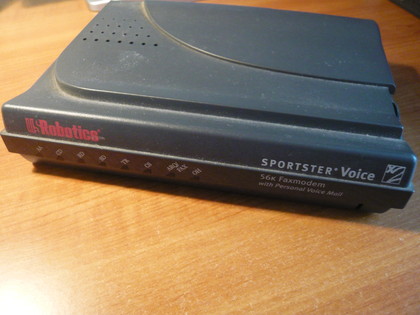Getting connected: a history of modems
011101010010000001100111 011001010110010101101011

Their arrival heralded a new age of communications and they played a major role in the explosion of the internet. We're talking, of course, about modems. Here we look back on the development of this remarkable device.
When the US Air Force needed a convenient way of transmitting hundreds of radar images to command centres during the Cold War in the late 1940s they turned to the telephone system as a solution.
Fortunately modems, already in action in Teletype since the 1920s, were the perfect tool for taking the digital radar images and converting them into analogue transmissions and then back again so that they could be sent across the network of telephone systems already in place.

FIRST MODEM: AT&T's 1958 modem. Not exactly your small, white unobtrusive box of today, is it? [Image credit: AT&T]
The modulator-demodulator, aka the modem, was enhanced by Bell Laboratories to improve upon the Teletype speed of approximately 150 bits per second (bps).
It was in 1962 that the first commercial modem, the Bell 103, was released by AT&T. Including full-duplex transmission, frequency-shift keying (FSK) and a speed of 300 bps (baud). These modems were designed to hold a telephone's receiver in a cradle with wire connections running from the cradle to the computer.

BIT BY BIT: The Bell 103 modem that ran at 300 bits per second [Image credit: www.velocityguide.com]
Sign up to the TechRadar Pro newsletter to get all the top news, opinion, features and guidance your business needs to succeed!
To grab a bit of perspective on the actual speed of these modems, consider that a letter consists of eight bits. A speed of 300 bits meant that this modem could only send out around 30 letters a second.
It was also in the 1960s that Paul Taylor, building upon the work of James C Marsters and Robert Weitbrecht, developed the world's first telecommunications device for the deaf using an acoustic modem.

CONNECTED: The Miniprint 425 TDD telecommunications device for the deaf
The spread of bulletin board systems (BBS) meant that users were soon demanding greater speeds to transfer larger files and images and market demand led to the development of the V.22 or Bell 212 modem at 1200 baud.

ONLINE: Using a 1200 baud modem to access the BBS at one of Canada's largest universities [Image credit: dblackadder]
This modem delivered more characters and introduced a very simple data compression that worked well with text but didn't have great results with images.
Running along in the background was also some hefty legal action and competition as AT&T initially prevented customers from connecting devices from other companies to their telephone lines.
However, thanks to Tom Carter the Carterfone Decision of 1968 soon saw this unfair advantage taken away from AT&T.
"While we could visualize what should be possible and how it could change the shape of the communications industry, our first thought, however, was for self preservation... I approached a number of communications equipment manufacturers for financial support, but they were all afraid of jeopardizing current or potential Bell contracts," said Tom.
After he won the case the market was suddenly left wide open with companies like General Electric entering the field with glee.
Then, in 1977, Dale Heatherington and Dennis Hayes created the world's first PC modem, the 80-103A.
A modem that offered all the right features at exactly the right price point and connected directly to the phone, something that users had not had the luxury of experiencing until this point.

FIRST PC MODEM: Dale Heatherington with IMSAI 8080 computer and early 300 baud Hayes modem [Image credit: Dale Heatherington]
Usually you'd have to dial the phone manually or use a dialer plugged into the computer.
It was so successful that they started up DC Hayes Associates, later known as Hayes Microcomputer Products, and developed several landmark technologies including the Smartmodem and the Hayes Command set.

PIONEER: Dennis Hayes in 1976 [Image credit: Dale Heatherington]
The Smartmodem was remarkable because it could switch between data mode and command mode and it did this using a sequence known as the Hayes Command Set that incorporated a unique "guard time" to prevent the data being sent from confusing the modem itself.
The Hayes Command Set has remained one of the most popular although it has been substantially built upon since its inception to accommodate higher speeds and better technologies.
Faster rates
Soon after 2400 baud modems hit the market on V.22 BIS, they doubled transfer rates and came with new data compression standards and introduced V.42 the Auto Reliable Protocol.
Speed was noticeably faster and transmissions were substantially more error free along with better compression.
The short-lived 4800 baud modem followed in the 1990s beaten down by the 9600 baud modem that became available in 1991.
The latter used single sideband transmission so modems could use two channels on the phone line instead of one.
It was the development of echo cancellation that allowed for this breakthrough in speeds as modems were now able to determine whether the signals they were receiving were from themselves or from other modems and "cancel" their own signals to prevent confusion.
It took 14 years, from 1980 until 1994, for the speed of the modem to develop from 14.4Kpbs to 28.9Kbps but it was only two years later, in 1996, that Brent Townshend came up with the technology for the 56k modem.

SUPER-SPEED: The 56k modem created by US Robotics [Image credit: Xiaowei]
"We started with a very specific problem - how do we get higher speed data from the digital server to many analog links - and started working on it from that point of view," Towshend explained to Network World in 1997.
Townshend didn't go into the business of making modems; instead he merely took out the patented and licensed the technology for a substantial $2.50 per modem.
This has dropped to 22 US cents per soft modem today but it's not hard to imagine that he's swimming happily in a pool of money round about now.
Of course most of us are now enjoying the blistering speeds offered by ADSL but the dial-up modem still remains in circulation and its history is one of the most interesting to read.
It's fascinating that development was not as rapid as many modern technologies and that, for many years, people were happy with the snail-like speed of 300 baud.
The modem heralded a new age of communication and initiated the widespread use of the internet; achievements that we now take for granted but could not be conceived of as recently as the 1980s.
-------------------------------------------------------------------------------------------------------
Liked this? Then check out Thanks for the memory: the story of storage
Sign up for TechRadar's free Weird Week in Tech newsletter
Get the oddest tech stories of the week, plus the most popular news and reviews delivered straight to your inbox. Sign up at http://www.techradar.com/register